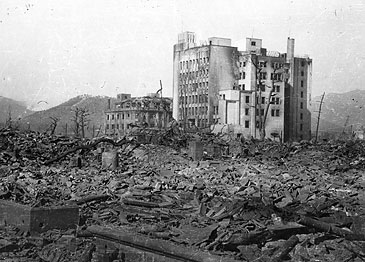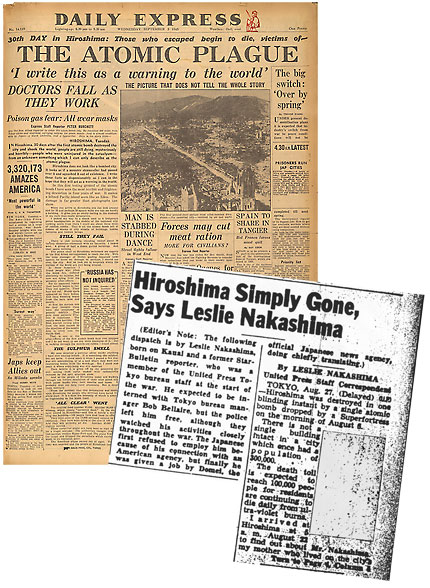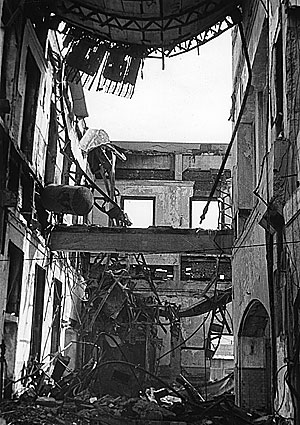The World Hears of an Atomic Tragedy
US President Truman announced the bombing of Hiroshima over the radio early in the morning of August 7 Japan time. Subsequently, many foreign newspapers reported the bombing. Toward the end of August, special foreign correspondents filed eyewitness reports describing the damage. The images they conveyed to their home audiences revealed a city in ruins, communities gone without a trace, and horribly injured people suffering and dying one after another.
 |
1 City of scorched earth August 1945 Kami-nagarekawa-cho (now, Teppo-cho) 870m from the hypocenter Photo by Satsuo Nakata |
|
2 Fukuya Department Store (Left is the former building, right is the new building) August 1945 Ebisu-cho 710m from the hypocenter Photo by Mitsugi Kishida Courtesy of Teppei Kishida |
 |
 |
3 Reporting by Wilfred Burchett September 5, 1945Daily Express Courtesy of The British Library Wilfred Burchett, a reporter from the British Daily Express newspaper, came to Hiroshima at the beginning of September 1945. Walking amidst the ruins, he reported about the destroyed Hiroshima Castle and similar scenes. ©The British Library Board. All rights Reserved |
|
4 Reporting by Leslie Nakashima August 30, 1945 Honolulu Star Bulletin Courtesy of US Library of Congress On August 22, Leslie Nakashima, a second-generation Japanese-American born in Hawaii, came to Hiroshima, his parent's hometown, in order to look for his mother. Once there he sent a telegram to UP describing the situation in Hiroshima. His article described how the downtown area of the city was in complete ruins except for a few steel-reinforced concrete buildings and how deceased victims were emerging daily from the relief stations. |
 |
5 The collapsed ceiling of Hiroshima Station October 1945 Matsubara-cho 1,900m from the hypocenter Photo by Shunkichi Kikuchi |
